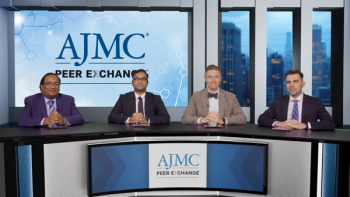
All Oral Regimens in AML: Future Sequencing Implications
Panelists discuss how future AML treatment will likely involve sophisticated decisions about triplet combinations, optimal sequencing of targeted agents, and balancing efficacy with toxicity through either upfront intensive approaches or thoughtful sequential doublet therapies.
Episodes in this series

Patients with multiple targetable mutations face complex treatment decisions as health care teams determine whether to combine multiple targeted agents simultaneously or sequence them strategically to maximize effectiveness while minimizing toxicity. The development of triplet and potentially quadruplet oral regimens offer unprecedented treatment options but requires careful consideration of cumulative toxicity risks, particularly for older patients who may be more vulnerable to adverse effects. Clinical trials are actively investigating whether initial intensive combination approaches or thoughtful sequential therapy provides better long-term outcomes for patients.
Treatment sequencing strategies may significantly impact patient outcomes, with emerging evidence suggesting that the order of therapy administration could affect both immediate response rates and long-term survival. Patients and health care teams must weigh the potential benefits of upfront combination therapy against the strategy of sequential treatment approaches that might preserve treatment options for disease progression while reducing initial toxicity exposure. Current research includes studies comparing simultaneous vs sequential administration of FLT3 inhibitors with other targeted agents, providing crucial data to guide future treatment decisions.
The evolution toward sophisticated oral combination regimens represents a fundamental shift in acute myeloid leukemia (AML) care philosophy, moving from hospital-intensive treatments toward outpatient management of complex multidrug protocols. Patients can anticipate continued advances in oral treatment options but must also prepare for increased complexity in medication management, adherence requirements, and monitoring protocols. Health care teams are developing new models of care that support patients managing multiple oral medications while ensuring safety and effectiveness, recognizing that the future of AML treatment lies in personalized oral regimens tailored to individual genetic profiles and patient preferences.
Newsletter
Stay ahead of policy, cost, and value—subscribe to AJMC for expert insights at the intersection of clinical care and health economics.










































